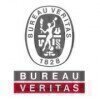Filter interviews by
TÜV NORD Project Engineer Interview Questions and Answers
12 Interview questions
MCC (Motor Control Center) work process involves design, installation, and maintenance of electrical control systems for motors.
Design: Create layout and specifications for the MCC based on project requirements.
Installation: Assemble and install MCC components like circuit breakers, contactors, and control panels.
Testing: Conduct functional tests to ensure all components operate correctly and safely.
Maintenance: R...
Tensioning and torquing tools ensure proper fastening and load distribution in engineering projects.
Torque Wrench: Used to apply a specific torque to fasteners, ensuring they are tightened to the correct specification.
Tensioning Tool: Devices like hydraulic tensioners that apply a precise amount of tension to bolts, often used in large structures.
Torque Angle Gauge: Measures the angle of rotation after a fastener ...
Manpower for a crane package varies based on project size, complexity, and type of crane used.
Typically, a small crane package may require 3-5 personnel for operation and setup.
Larger cranes, like tower cranes, may need 10-15 workers for assembly, operation, and safety monitoring.
Specialized roles include crane operators, riggers, and safety officers.
For example, a construction site with a mobile crane might requi...
Implementing strict protocols and training can prevent tool mishandling and ensure safety on site.
Conduct regular training sessions on proper tool handling and safety protocols.
Implement a tool tracking system to monitor the usage and location of tools.
Establish a designated storage area for tools and components to prevent loss and damage.
Use color-coded tags or labels to identify tools and their designated users.
...
Implementing preventive measures and regular maintenance can effectively control tool damage in engineering projects.
Conduct regular inspections to identify wear and tear, e.g., checking drill bits for dullness.
Implement proper storage solutions to prevent accidental damage, such as using toolboxes or racks.
Train staff on correct usage techniques to minimize misuse, e.g., demonstrating proper handling of power too...
Understanding crane lifting capacity is crucial for safe and efficient project execution.
Crane capacity is determined by the type of crane and its configuration.
For example, a tower crane can lift heavier loads than a mobile crane due to its fixed base.
The lifting capacity decreases as the radius increases; for instance, a crane may lift 10 tons at 10 meters but only 5 tons at 20 meters.
Load charts provided by man...
Understanding the height and weight of major components is crucial for design, safety, and functionality in engineering projects.
Structural Integrity: Knowing the weight of components helps in assessing load-bearing capacities and ensuring structural safety.
Transportation: Height and weight affect logistics; for example, oversized components may require special transport arrangements.
Installation: The dimensions o...
MCC closing involves safely shutting down a Motor Control Center, ensuring equipment and personnel safety.
1. Ensure all equipment is in a safe state before closing the MCC.
2. Notify all personnel involved in the operation about the MCC closure.
3. Follow lockout/tagout (LOTO) procedures to prevent accidental re-energization.
4. Gradually reduce load on the MCC by shutting down connected equipment.
5. Monitor voltage ...
The erection process involves a series of physiological and psychological events leading to penile rigidity.
1. Stimulation: Physical or psychological stimuli trigger nerve signals.
2. Blood Flow: Increased blood flow to the penis occurs due to vasodilation.
3. Engorgement: The corpora cavernosa fill with blood, causing the penis to enlarge and become rigid.
4. Maintenance: The erection is maintained by continued bloo...
Erection requirements involve planning, safety measures, and coordination for successful project execution.
Site Preparation: Ensure the site is cleared and ready for equipment and materials.
Safety Protocols: Implement safety measures like PPE and hazard assessments.
Equipment Availability: Confirm that all necessary tools and machinery are on-site.
Skilled Workforce: Ensure that qualified personnel are available for...
TÜV NORD Project Engineer Interview Experiences
1 interview found
I appeared for an interview in Mar 2023, where I was asked the following questions.
- Q1. Define about your previous job role
- Q2. Crane pad compaction detail
- Q3. Crane pad area detail
- Q4. Capacity of crane lifting
- Ans.
Understanding crane lifting capacity is crucial for safe and efficient project execution.
Crane capacity is determined by the type of crane and its configuration.
For example, a tower crane can lift heavier loads than a mobile crane due to its fixed base.
The lifting capacity decreases as the radius increases; for instance, a crane may lift 10 tons at 10 meters but only 5 tons at 20 meters.
Load charts provided by manufact...
- Q5. Detail in interacting and movement of major component
- Ans.
Effective interaction and movement of major components ensure project success and efficiency in engineering tasks.
Understand the specifications of each component to ensure compatibility.
Utilize CAD software for precise modeling and visualization of component interactions.
Implement a systematic approach for assembly, such as following a step-by-step guide.
Conduct regular checks and tests during the movement phase to ide...
- Q6. Height and weight of major components
- Ans.
Understanding the height and weight of major components is crucial for design, safety, and functionality in engineering projects.
Structural Integrity: Knowing the weight of components helps in assessing load-bearing capacities and ensuring structural safety.
Transportation: Height and weight affect logistics; for example, oversized components may require special transport arrangements.
Installation: The dimensions of com...
- Q7. Process of Erection
- Q8. Requirements of Erection
- Ans.
Erection requirements involve planning, safety measures, and coordination for successful project execution.
Site Preparation: Ensure the site is cleared and ready for equipment and materials.
Safety Protocols: Implement safety measures like PPE and hazard assessments.
Equipment Availability: Confirm that all necessary tools and machinery are on-site.
Skilled Workforce: Ensure that qualified personnel are available for the ...
- Q9. How many manpower required in one crane pakage
- Ans.
Manpower for a crane package varies based on project size, complexity, and type of crane used.
Typically, a small crane package may require 3-5 personnel for operation and setup.
Larger cranes, like tower cranes, may need 10-15 workers for assembly, operation, and safety monitoring.
Specialized roles include crane operators, riggers, and safety officers.
For example, a construction site with a mobile crane might require a ...
- Q10. How many cranes required in one crane pakage
- Q11. Which tools required for tensioning and torquing
- Ans.
Tensioning and torquing tools ensure proper fastening and load distribution in engineering projects.
Torque Wrench: Used to apply a specific torque to fasteners, ensuring they are tightened to the correct specification.
Tensioning Tool: Devices like hydraulic tensioners that apply a precise amount of tension to bolts, often used in large structures.
Torque Angle Gauge: Measures the angle of rotation after a fastener has b...
- Q12. Complete detail work of preparation for erection
- Q13. Detail work process of MCC
- Ans.
MCC (Motor Control Center) work process involves design, installation, and maintenance of electrical control systems for motors.
Design: Create layout and specifications for the MCC based on project requirements.
Installation: Assemble and install MCC components like circuit breakers, contactors, and control panels.
Testing: Conduct functional tests to ensure all components operate correctly and safely.
Maintenance: Regula...
- Q14. Process of MCC closing
- Ans.
MCC closing involves safely shutting down a Motor Control Center, ensuring equipment and personnel safety.
1. Ensure all equipment is in a safe state before closing the MCC.
2. Notify all personnel involved in the operation about the MCC closure.
3. Follow lockout/tagout (LOTO) procedures to prevent accidental re-energization.
4. Gradually reduce load on the MCC by shutting down connected equipment.
5. Monitor voltage and c...
- Q15. Punch point close plan
- Q16. How you can stop the mishandling of tools and tackle and major components in site
- Ans.
Implementing strict protocols and training can prevent tool mishandling and ensure safety on site.
Conduct regular training sessions on proper tool handling and safety protocols.
Implement a tool tracking system to monitor the usage and location of tools.
Establish a designated storage area for tools and components to prevent loss and damage.
Use color-coded tags or labels to identify tools and their designated users.
Condu...
- Q17. How you can control of tools damages
- Ans.
Implementing preventive measures and regular maintenance can effectively control tool damage in engineering projects.
Conduct regular inspections to identify wear and tear, e.g., checking drill bits for dullness.
Implement proper storage solutions to prevent accidental damage, such as using toolboxes or racks.
Train staff on correct usage techniques to minimize misuse, e.g., demonstrating proper handling of power tools.
Es...
- Q18. Process of pre-com
- Ans.
Pre-com is the process of preparing and organizing project components before execution.
Define project scope and objectives clearly.
Gather and analyze all necessary data and resources.
Develop a detailed project plan with timelines.
Identify and allocate roles and responsibilities among team members.
Conduct risk assessments and develop mitigation strategies.
- Q19. Post-com plan at site
- Ans.
A post-com plan outlines the steps for project completion and site handover, ensuring all tasks are finalized efficiently.
Conduct a final site inspection to ensure all work meets quality standards.
Compile and submit all necessary documentation, including as-built drawings and warranties.
Organize a handover meeting with stakeholders to discuss project outcomes and address any concerns.
Ensure all safety measures are revi...
Top trending discussions






Interview questions from similar companies

I applied via Naukri.com and was interviewed in Feb 2021. There were 3 interview rounds.
Interview Questionnaire
1 Question
- Q1. Normal questions regarding civil engineering subjects
Interview Preparation Tips

(2 Questions)
- Q1. Dissuasion for past company work
- Q2. Asking qualification
(2 Questions)
- Q1. Types of brick and how to check brick quality, Cement IS code and how to check quality, Pipe IS code
- Ans.
Types of brick, how to check brick quality, Cement IS code and quality check, Pipe IS code
Types of bricks include clay bricks, concrete bricks, fly ash bricks, etc.
To check brick quality, look for uniform shape, size, color, sound when struck, and absence of cracks.
Cement quality is checked using IS code 12269:1987. Quality can be checked by conducting tests like fineness, setting time, compressive strength, etc.
Pipe q...
- Q2. Asking, BBS Over had tank , Pipe jointing , and other questions
(1 Question)
- Q1. Salary dissuasion,

I applied via Walk-in and was interviewed before Dec 2023. There were 3 interview rounds.
(2 Questions)
- Q1. Work experience
- Q2. Last company details and qualifications
(2 Questions)
- Q1. Brick test compressive strength, Over hand tank like columns dom zik etc.
- Q2. Quality test cement test , cube test , slump , temperature test curing HDPE pipe IS code life , Manhole , Pipe laying etc
(1 Question)
- Q1. Salary dissuasion

Senior Engineer Interview Questions & Answers
Quality Austria Central Asiaposted on 25 Feb 2025
I appeared for an interview before Feb 2024.
Estimate a civil engineering project.

I applied via Company Website and was interviewed in Apr 2023. There were 3 interview rounds.

General SSC level aptitude
(1 Question)
- Q1. Online test is hard, post that interview is mediocre
Interview Preparation Tips
- Jal jivan mission projects

Senior Engineer Interview Questions & Answers
Medhaj Techno Conceptposted on 2 May 2024
I applied via Approached by Company and was interviewed in Apr 2024. There was 1 interview round.
(1 Question)
- Q1. Brief knowledge of civil engineering and building construction

Senior Engineer Interview Questions & Answers
Medhaj Techno Conceptposted on 3 Nov 2021
Interview Questionnaire
3 Questions
- Q1. Introduce yourself?
- Q2. How will you test about leakage of oil in Transformer?
- Ans.
Testing for oil leakage in transformers involves visual inspection, oil analysis, and pressure testing.
Visual inspection of the transformer for any signs of oil leakage
Oil analysis to check for any abnormal levels of dissolved gases or contaminants
Pressure testing to check for any leaks in the transformer's oil-filled compartments
Use of ultrasonic testing to detect any leaks in the transformer's tank
Regular maintenance...
- Q3. How will you find out an error after completing the work of any Feeder?
- Ans.
I will conduct a thorough testing and inspection process to identify any errors in the Feeder.
Perform visual inspection of the Feeder
Conduct electrical testing to ensure proper functioning
Check for any loose connections or damaged components
Compare the Feeder's performance to the expected results
Review any error logs or system alerts
Consult with colleagues or experts for additional input
Interview Preparation Tips
Also related to B.Tech. stream.

I applied via Campus Placement and was interviewed before Oct 2022. There were 2 interview rounds.
Electrical and Electronic test
(1 Question)
- Q1. All technical questions do the basic theory properly
Interview Preparation Tips

Quality Engineer Interview Questions & Answers
Quality Austria Central Asiaposted on 27 Jan 2022
(1 Question)
- Q1. For quality assurance
Interview Preparation Tips
TÜV NORD Interview FAQs
Tell us how to improve this page.
TÜV NORD Interviews By Designations
- TÜV NORD Inspection Engineer Interview Questions
- TÜV NORD Quality Engineer Interview Questions
- TÜV NORD Senior Quality Engineer Interview Questions
- TÜV NORD Senior Collection Officer Interview Questions
- TÜV NORD Senior Engineer Interview Questions
- TÜV NORD Third Party Inspection Engineer Interview Questions
- TÜV NORD MEP Engineer Interview Questions
- TÜV NORD QA/QC Civil Engineer Interview Questions
- Show more
Interview Questions for Popular Designations
Overall Interview Experience Rating
based on 3 interview experiences
Difficulty level
Duration
Interview Questions from Similar Companies
TÜV NORD Project Engineer Reviews and Ratings
based on 15 reviews
Rating in categories
|
Inspection Engineer
560
salaries
| ₹4.2 L/yr - ₹9.5 L/yr |
|
Quality Engineer
236
salaries
| ₹2.5 L/yr - ₹7 L/yr |
|
Senior Inspection Engineer
153
salaries
| ₹5.8 L/yr - ₹12 L/yr |
|
Assistant Manager
85
salaries
| ₹5.8 L/yr - ₹14 L/yr |
|
Senior Quality Engineer
77
salaries
| ₹5 L/yr - ₹9 L/yr |

Bureau Veritas

CMS Infosystems

Intertek

Medhaj Techno Concept
- Home >
- Interviews >
- TÜV NORD Interview Questions














